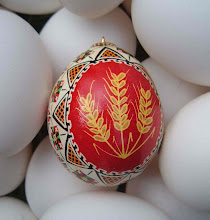In The New Organic Grower, Eliot Coleman gives his philosophy for dealing with pests - both bugs and diseases - as "plant positive, not pest negative." We should try to prevent diseases and insect pests, which minimizes having to deal with them when they arrive. As with people, the way to do this is to optimize growing and living conditions, so the plant's immune system is strong and resistant (plants have immune systems!)
The best way to be plant positive is to feed the soil, not the plant. Every bit of organic material and trace minerals we add to the soil helps build it up so it's able to support plant growth. Our soil is so sandy that I'm not there yet, and I have to feed plants as well as working to build up the soil. Even with the compost I add, I tend to concentrate it in the bottom of plant holes, and directly in the rows where I'm going to plant. Over the years the whole plot gets some compost. For trace minerals I've added greensand (as if we need more sand - but this particular sand is ground rock very high in trace minerals) and dried kelp. When we add commercial fertilizer we're only adding Nitrogen, Phosphorus, and Potassium. But there are lots of other elements healthy plants need in various proportions, including Calcium, Magnesium, Boron, and even copper and zinc. Our soil tends to be acid, and so adding lime adds needed calcium. But adding dolomitic lime (available pelleted at various garden stores) adds magnesium as well as calcium (magnesium substitutes for some of the calcium atoms in the calcium carbonate. The pink stone along the interstate cuts in Colchester, or along the lake, is dolomite). Trying to garden without these added trace elements is like trying to stay healthy by only eating meat and carbohydrates. Enough calories, but you're not going to thrive without your fruits and veggies. And you might even need a vitamin pill.
Other things that can help are spraying plants with sea weed extract at strategic times, interplanting herbs and onions to (apparently) confuse the smell of the plants for pests (and spraying with garlic may help deter some insects), planting in small patches so there's not a concentrated stand for insects to attack, and using trap crops. Sometimes insects prefer a plant other than the crop plant, and you can collect insects on this plant you're willing to sacrifice, and minimize them on your crop. For example, striped cucumber beetles seem to prefer tomatillos to cucumbers.
The sad truth is that with a community garden it's very difficult to eradicate insect pests, because there will always be gardeners who don't practice good control. But you can pamper your own plants so that at the least the pests go in search of weaker plants in somebody else's plot - until they, too, learn how to manage them.
Subscribe to:
Post Comments (Atom)



Just bought Coleman's book for myself. It's really inspirational, even for a home gardener.
ReplyDelete